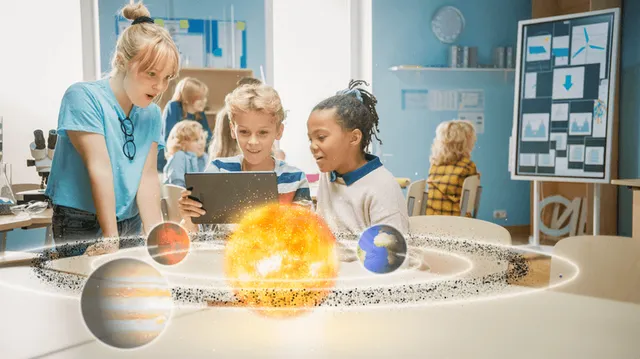How Augmented reality will revolutionize class rooms

Augmented reality (AR) is a technology that allows users to superimpose digital information and media onto the real world. In the education sector, AR has the potential to revolutionize the way we learn and teach. Here are a few ways that AR could transform classrooms:
Improved engagement: AR can make learning more interactive and engaging for students, by allowing them to experience concepts in a more immersive way. For example, a student learning about ancient civilizations could use an AR app to see virtual reconstructions of historical sites and buildings overlaid on the real world. This can help to bring abstract concepts to life and make them more meaningful to students.
Personalized learning: AR can be used to create customized learning experiences for students, based on their individual needs and interests. For example, an AR app could provide customized learning content and activities based on a student's age, ability level, and learning style.
Enhanced visualization: AR can help students better understand complex concepts by providing visual representations of them. For example, a student learning about the human anatomy could use an AR app to see a virtual model of the human body, with different parts and systems labeled and highlighted. This can make learning more intuitive and help students retain information more effectively.
Access to virtual resources: AR can provide students with access to virtual resources that might not be available in the physical classroom. For example, an AR app could allow students to view and interact with virtual museum exhibits, scientific experiments, or historical artifacts. This can help to enrich the learning experience and provide students with more diverse learning opportunities.
Overall, AR has the potential to revolutionize classrooms by making learning more interactive, personalized, and visual. As this technology becomes more widespread, it is likely to play an increasingly important role in education.